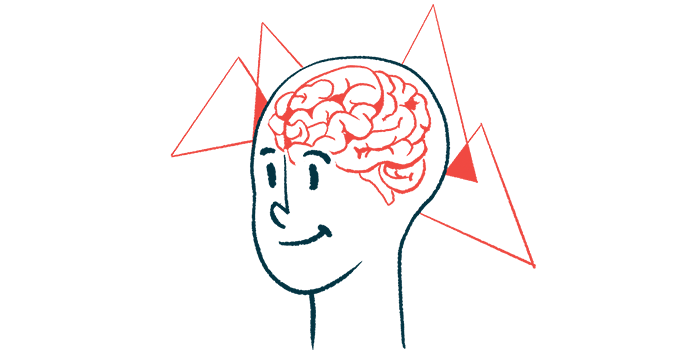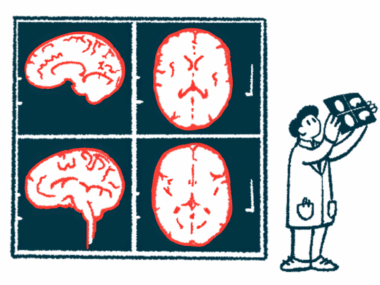Vitamin D May Help Brain Cells Clear Toxic Protein in Parkinson’s
Written by |

Parkinson’s patients have a subpopulation of astrocytes — brain cells that support neuronal function and health — that produce a vitamin D-activating enzyme called CYP27B1 and are involved in clearing the toxic alpha-synuclein clumps that form in the disease.
The small study compared deceased Parkinson’s patients’ brain samples with those who had died without the disease.
Its data suggest that the potential neuroprotective effect of vitamin D — which is usually deficient in Parkinson’s patients — may prevent astrocytes’ transformation into a neurotoxic state and/or promote their ability to clear alpha-synuclein clumps.
Researchers called their work the first to link vitamin D “to the clearance of [alpha-synuclein] aggregates” and show “that the presence of CYP27B1 positive astrocytes distinguishes [Parkinson’s] patients.”
The study, “Astrocytes expressing Vitamin D-activating enzyme identify Parkinson’s disease,” was published in CNS Neuroscience & Therapeutics.
Further studies are needed to confirm these findings and clarify what underpins vitamin D’s neuroprotective effects in Parkinson’s, which may help identify new therapeutic approaches, the researchers noted.
Parkinson’s disease is characterized by the progressive loss of dopamine-producing neurons and dopamine signaling in the substantia nigra, a brain region involved in the control of voluntary movement. Dopamine is a major chemical messenger in the brain.
This nerve cell loss is thought to be triggered mainly by the toxic buildup of alpha-synuclein, a protein abundant in the brain that’s believed to help regulate nerve cell function and communication.
Astrocytes, one of the most abundant cells in the brain, “are key players in Parkinson’s disease,” the researchers wrote.
While they have been shown to uptake and break down alpha-synuclein clumps in Parkinson’s, when they take on inflammatory and altered metabolic properties they can turn into a neurotoxic cell that contributes to further neurodegeneration.
For this reason, identifying the mechanisms that promote astrocytes’ neuroprotective effects can help develop new therapies.
An increasing body of evidence suggests that vitamin D has neuroprotective effects, but its underlying mechanisms remain largely unknown.
Vitamin D is usually found at lower-than-normal levels in Parkinson’s patients, especially those with more severe symptoms, including cognitive problems. Genetic changes in the gene that codes for its receptor have been linked to an increased risk of developing the disease.
Also, vitamin D supplementation has reportedly been beneficial to younger Parkinson’s patients and those with changes in the vitamin D receptor.
“Despite the important role of vitamin D in [Parkinson’s disease], it is unknown whether the expression of the key signaling components is altered during the disease,” the researchers wrote.
To address this, researchers in Italy analyzed the levels and localization of enzymes involved in vitamin D activation (CYP27B1) and breakdown (CYP24A1), as well as its receptor, in brain tissue from nine Parkinson’s patients and four unaffected controls.
All patients, five men and four women between the ages of 71 and 91 when they died, had severe alpha-synuclein-related neurodegeneration. None of the controls, three women and one men who died between the ages of 64 and 93, were affected by neurological diseases.
Only CYP27B1 showed significant differences between Parkinson’s patients and controls.
In patients’ substantia nigra, the proportion of dopamine-producing neurons positive for the vitamin D-activating enzyme was significantly reduced relative to nonaffected individuals.
This suggests that “a less activation of vitamin D is implicated in the disease,” the researchers wrote.
Parkinson’s patients also showed a significantly higher proportion of CYP27B1-positive astrocytes not only in the substantia nigra, but also in other brain regions affected by the disease. These cells were nearly absent in the substantia nigra of controls, pointing to CYP27B1-positive astrocytes as a potential marker of Parkinson’s.
In addition, there were no changes in the number of astrocytes between the two groups, reinforcing the belief that this difference may be “the result of a neuroprotective response,” the team wrote.
The researchers then tested whether the accumulation of astrocytes positive for the vitamin D-activating enzyme in Parkinson’s had beneficial or damaging effects.
They found that these astrocytes did not show a neurotoxic molecular signature and most of them were in direct contact with dopamine-producing neurons that did not contain Lewy bodies, the most mature form of alpha-synuclein clumps.
Further analysis revealed that 74.4% of CYP27B1-positive astrocytes were able to uptake the toxic alpha-synuclein aggregates, which appeared to be broken down by a cellular process known as autophagy.
Moreover, patients without dementia had a threefold significantly higher proportion of CYP27B1-positive astrocytes in the frontal cortex, a major brain area that controls cognitive functions and is affected in Parkinson’s.
These findings provide “novel insights into vitamin D involvement in human astrocyte response during Parkinson’s,” with the activation of vitamin D pathway potentially being “a novel mechanism to prevent the neurotoxic switch of astrocytes,” the researchers wrote.
Data also highlight that CYP27B1-positive astrocytes accumulate exclusively in brain regions involved in Parkinson’s and have neuroprotective features, including in clearing toxic alpha-synuclein clumps.
This suggests that “vitamin D could exert its neuroprotective role through astrocytes,” the researchers wrote, adding more research is needed to “clarify the complex relationship between vitamin D activation in astrocytes and Parkinson’s.”







